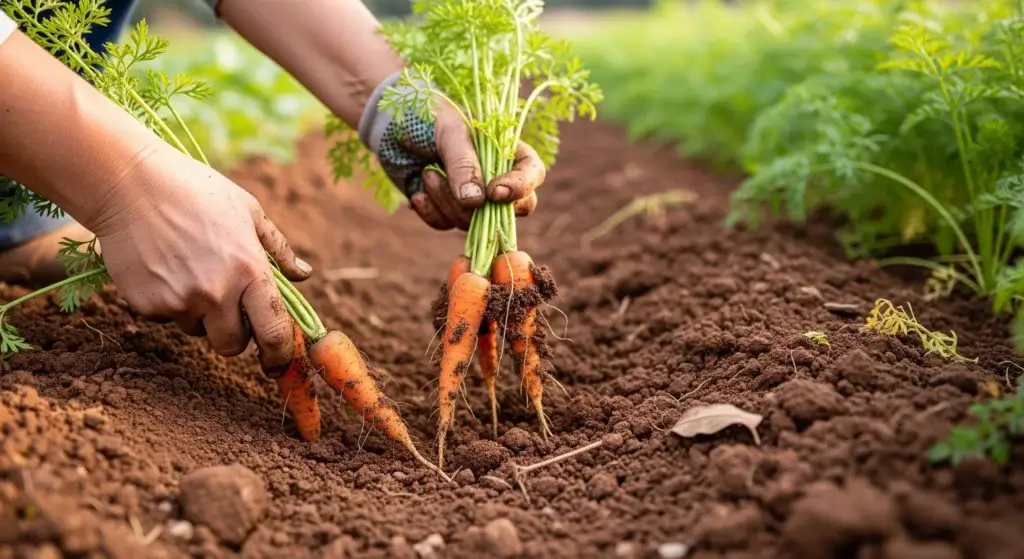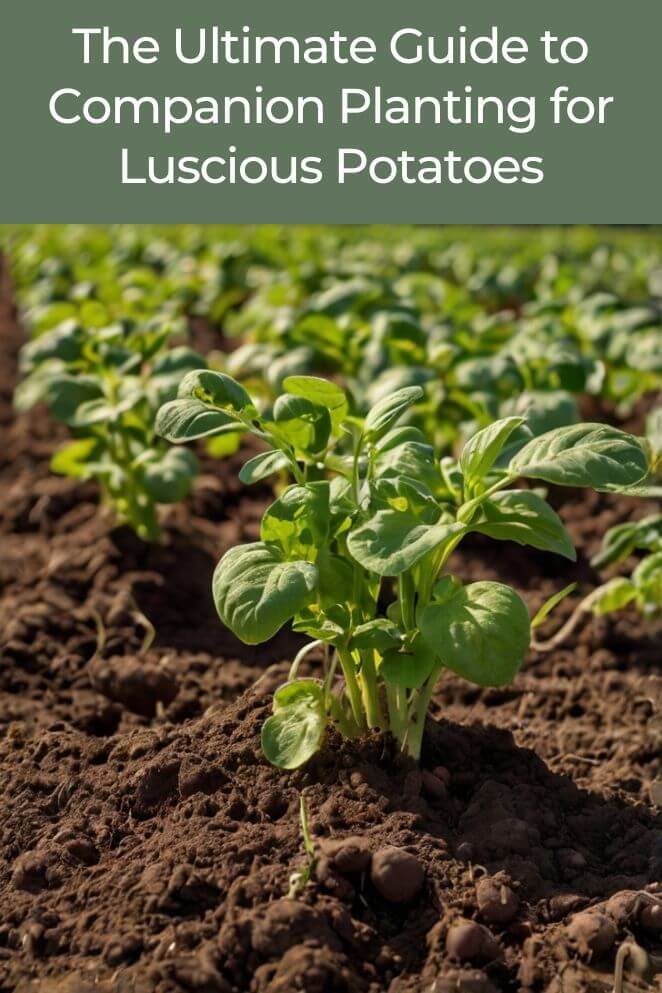
Potatoes are a staple crop in many gardens due to their versatility and relatively easy cultivation.
However, like all plants, they can benefit significantly from strategic companion planting.
Companion planting is the practice of growing different plants together to enhance growth, deter pests, and improve yields.
In this guide, we’ll explore the benefits of companion planting for potatoes, the best and worst companion plants, and some handy tips to get the most out of your potato garden.
Benefits of Companion Planting for Potatoes
Companion planting offers numerous benefits that can improve the health and productivity of your potato plants:
Pest control
Some plants naturally repel pests that like to attack potatoes.
For example, planting marigolds and nasturtiums near your potatoes can keep nematodes and aphids away.
These pests can harm your potato plants, so having natural repellents nearby means you won’t need to use as many chemical pesticides.
- Read also: DIY Potato Planter Box: A Step-by-Step Guide to Growing Spuds
- Read also: Effective Strategies on How to Prevent Potato Beetles
Improved soil health
Beans and peas are great companions for potatoes because they can fix nitrogen in the soil.
Nitrogen is an essential nutrient for plants, and legumes like beans and peas have a unique ability to pull nitrogen from the air and add it to the soil.
This makes the soil richer and better for growing potatoes.
Enhanced growth and flavor
Certain herbs can make your potatoes grow better and taste even better.
Planting basil and thyme near your potatoes can subtly enhance their flavor.
These herbs also have aromatic oils that can deter pests, giving your potatoes an extra layer of protection.
Efficient space utilization
Companion planting helps you make the most of your garden space.
By planting crops that grow well together, you can maximize your space.
For example, lettuce has shallow roots, while potatoes have deeper roots.
Planting them together means they won’t compete for the same nutrients and will grow well side by side.
Weed suppression
Weeds compete with your plants for nutrients, water, and sunlight.
Ground cover plants like lettuce can help keep weeds at bay by covering the soil and blocking the light weeds need to grow.
This means less work for you and more resources for your potatoes.
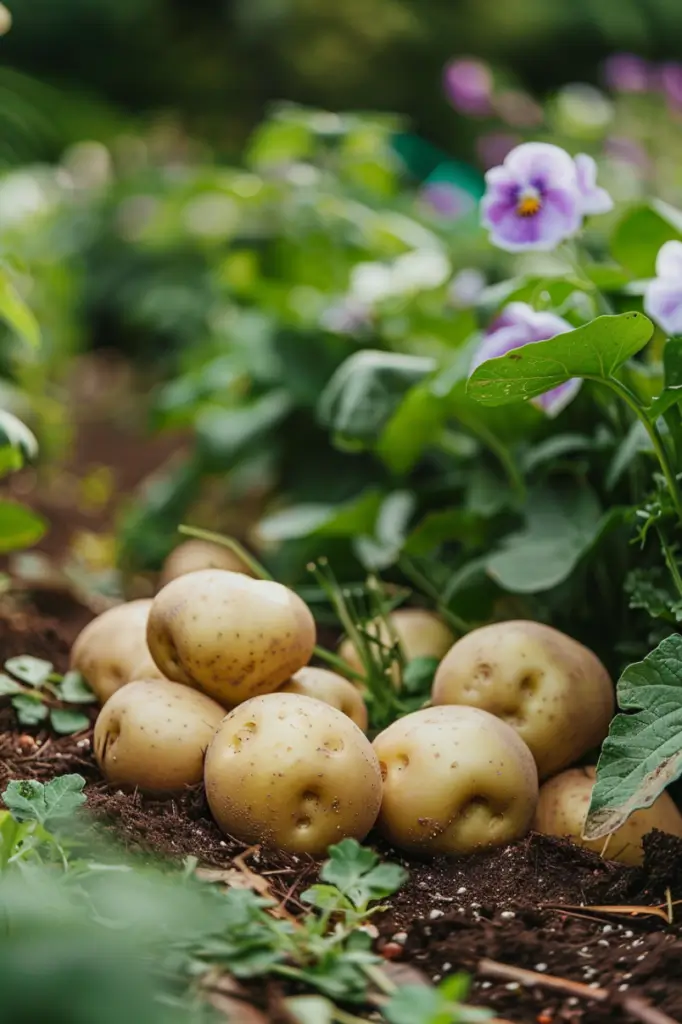
Best Companion Plants for Potatoes
Selecting the right companions can maximize your potato harvest.
Here are some of the best companion plants for potatoes:
Beans
Beans are fantastic companions for potatoes.
They have the unique ability to fix nitrogen in the soil, which potatoes need to grow strong and healthy.
The roots of beans also help to aerate the soil, improving its structure and making it easier for potato roots to spread out and absorb nutrients.
Marigolds
Marigolds are well-known for their pest-repelling properties.
They can keep nematodes, aphids, and beetles away from your potato plants.
Planting marigolds around your potato patch acts as a natural barrier against these common pests, reducing the need for chemical pesticides.
Nasturtiums
These bright, colorful flowers are not only beautiful but also very useful in the garden.
Nasturtiums attract beneficial insects that help with pollination and pest control.
They also repel pests like aphids and whiteflies.
Additionally, nasturtiums act as a trap crop, luring pests away from your potatoes and keeping them safe.
Cabbage family (Brassicas)
Plants from the cabbage family, such as cabbage, broccoli, and kale, can be great neighbors for potatoes.
They help repel pests like flea beetles that can harm your potato plants.
Brassicas also provide a windbreak, protecting delicate potato plants from strong winds and harsh weather.
Horseradish
Planting horseradish near your potatoes can help keep pests at bay, especially the Colorado potato beetle.
The strong aroma of horseradish deters these pests, preventing them from damaging your potato crop.
Herbs (basil, thyme, and parsley)
Herbs like basil, thyme, and parsley not only add flavor to your potatoes but also bring several benefits to your garden.
They attract beneficial insects that help with pollination and pest control, and their aromatic oils can repel harmful pests.
These herbs make excellent companions for potatoes, enhancing both the health and taste of your harvest.
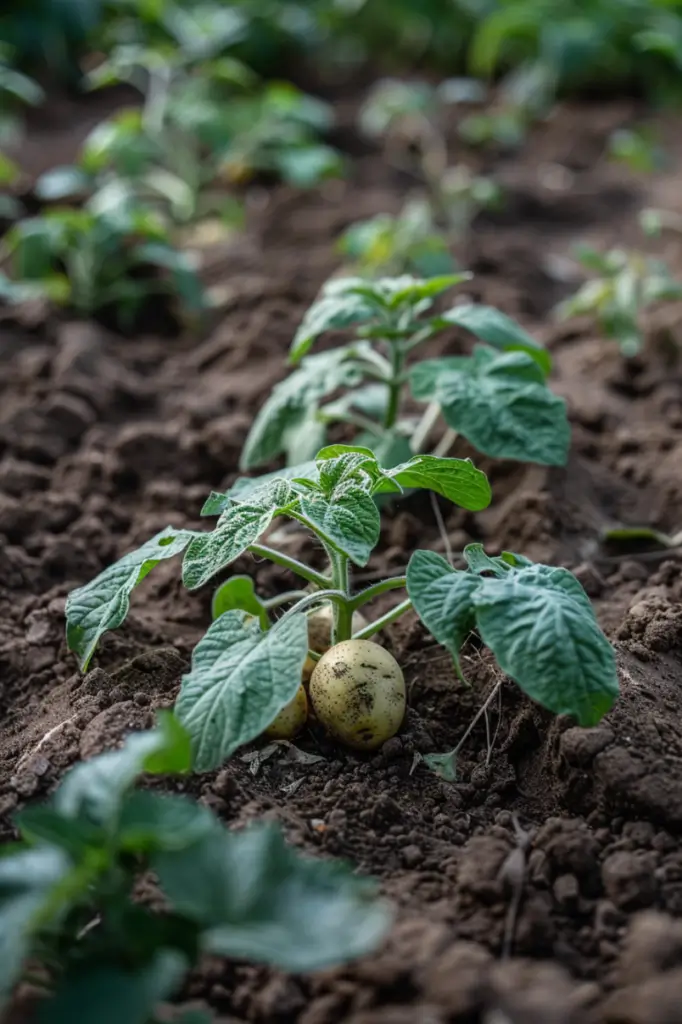
Worst Companion Plants for Potatoes
While some plants are beneficial companions, others can hinder the growth of potatoes.
Avoid planting the following near your potato plants:
Tomatoes
Tomatoes and potatoes belong to the same plant family, the nightshade family.
This means they are susceptible to the same diseases, like blight.
Planting them together increases the risk of these diseases spreading, which can ruin both crops.
Keeping them apart helps to minimize this risk and keeps your garden healthier.
Carrots
Carrots and potatoes are both heavy feeders, meaning they need a lot of the same nutrients from the soil.
When planted together, they compete for these nutrients, which can stunt their growth and reduce yields for both plants.
It’s better to plant carrots and potatoes in separate areas to give each enough resources to grow well.
Cucumbers
Cucumbers can attract pests like cucumber beetles, which can also harm potato plants.
Additionally, cucumbers and potatoes have different water needs.
Cucumbers prefer consistent moisture, while potatoes can suffer if they are too wet.
These conflicting needs make them unsuitable companions in the garden.
Pumpkins and squash
Pumpkins and squash are sprawling plants that can overshadow your potato plants.
They spread out and take up a lot of space, which can block sunlight and airflow to your potatoes.
Both sunlight and good air circulation are crucial for healthy potato growth.
Planting pumpkins and squash away from your potatoes ensures that each plant gets the light and space it needs.
Sunflowers
Sunflowers can release chemicals into the soil that inhibit the growth of nearby plants, including potatoes.
This phenomenon, known as allelopathy, can prevent your potatoes from growing properly.
It’s best to keep sunflowers at a distance from your potato plants to avoid any negative effects on their growth.
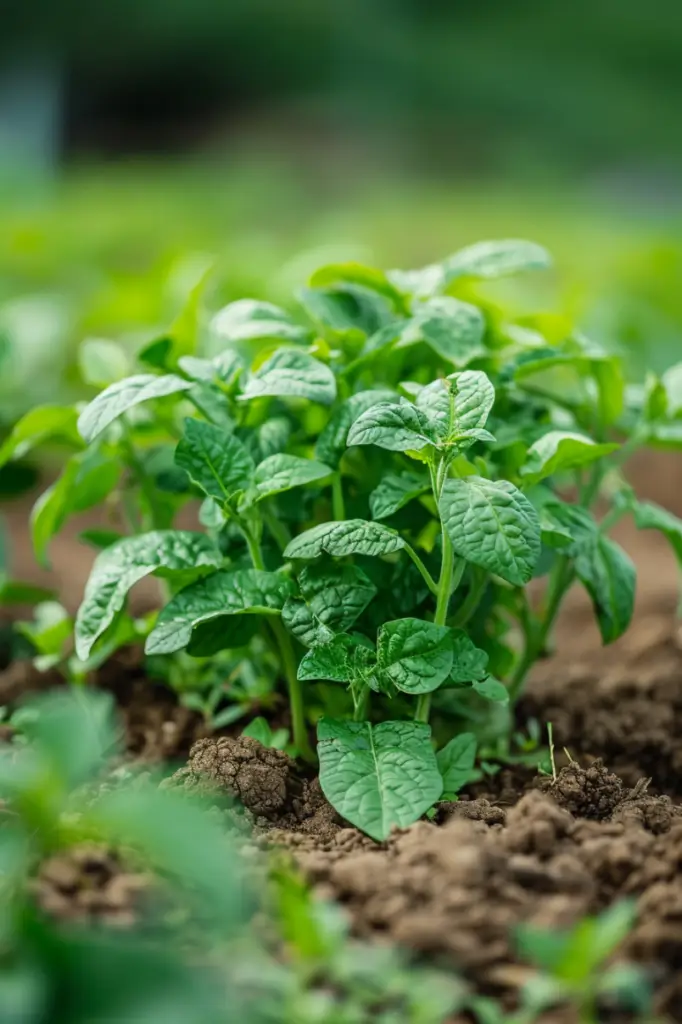
Tips for Companion Planting with Potatoes
Companion planting can significantly enhance your potato crop, but it requires careful planning and management.
Here are some practical tips to help you get the most out of companion planting with potatoes:
Plan your garden layout
Before you start planting, take some time to plan your garden layout.
Sketch out your garden and decide where to place each type of plant.
This ensures that compatible plants are grouped together, maximizing the benefits of companion planting.
A well-thought-out layout can improve plant health, increase yields, and make your gardening tasks more manageable.
Rotate crops annually
Crop rotation is crucial for maintaining soil health and reducing the risk of diseases.
Avoid planting potatoes in the same spot year after year, as this can lead to soil depletion and increased disease problems.
Instead, rotate your crops by planting potatoes in different areas of your garden each year.
This practice helps prevent nutrient depletion and breaks the cycle of pests and diseases that can affect potatoes.
Use intercropping
Intercropping involves planting fast-growing companion plants between the rows of your potatoes.
This strategy not only maximizes the use of space in your garden but also provides additional benefits like pest control and soil improvement.
For example, planting beans between potato rows can help fix nitrogen in the soil, while marigolds can deter pests.
Intercropping creates a more diverse and resilient garden ecosystem.
Monitor for pests and diseases
Regularly check your plants for signs of pests and diseases.
Early detection is key to preventing major issues and ensuring a healthy garden.
Look for common potato pests like aphids and potato beetles, as well as signs of diseases such as blight.
If you catch problems early, you can take action to control them before they spread and cause significant damage.
Water wisely
Ensure that the companion plants you choose have similar water needs to your potatoes.
Potatoes require consistent moisture to grow well, so it’s important to choose companions that also thrive with regular watering.
Overwatering or underwatering can stress plants and reduce yields, so matching water requirements helps maintain a healthy and balanced garden.
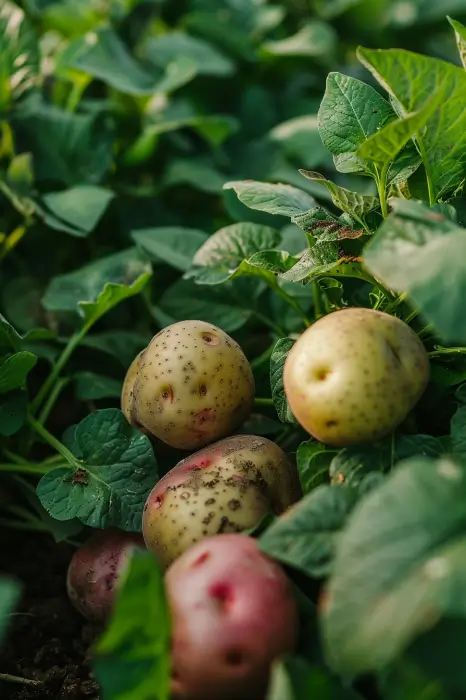
- Read also: Sweet Companions: Unveiling the companion Plants for Strawberries
- Read also: Unveiling the Best Companion Plants for Luscious Cucumbers
Conclusion
Companion planting is a time-tested gardening strategy that can significantly improve the health and productivity of your potato plants.
By choosing the right companions, such as beans, marigolds, and nasturtiums, you can enhance soil fertility, repel pests, and enjoy a bountiful harvest.
Avoid planting incompatible plants like tomatoes and sunflowers to prevent competition and disease spread.
With careful planning and regular maintenance, companion planting can transform your potato garden into a thriving and resilient ecosystem.

